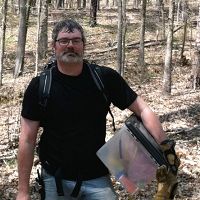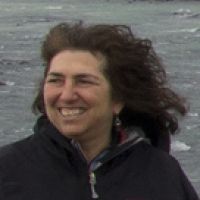Cross-CZO Studies
The CZO program began in 2007 with 3 CZOs, with the number increased to 6 CZOs in 2008. At that time efforts transformed a program of independent CZO sites into a broader community research network, and the network expanded to 10 CZOs in 2013. Initial efforts focused on: i) developing common measurements and data to facilitate cross-CZO research, ii) forming cross-CZO working groups around various issues, iii) articulating shared conceptual models for the critical zone, iv) promoting cross-CZO dialog and research activities, v) establishing a common data portal for the 10 CZOs, and vi) sharing of ideas and resources to create additional opportunities for community research on the critical zone.
© Southern Sierra Critical Zone Observatory
The Southern Sierra Critical Zone Observatory is part of a growing international network of Critical Zone Observatories.
Cross-CZO Network Activities and Purpose
Researchers investigating critical zone properties and processes at the Southern Sierra Critical Zone Observatory conduct research at other Critical Zone Observatories in the United States of America and other countries such as France, Germany, and China. By relaying data and research findings within the network of Observatories and throughout the critical zone research community, we are catalyzing rapid development and refinement of earth systems models.
A key goal of research at our and other Critical Zone Observatories is to construct whole-watershed energy, water, carbon and other mass balances for a variety of environmental settings. Having these data and models available allows critical zone researchers to create and use a uniform research platform.
Several cross-CZO research efforts are ongoing, including studies of organic matter quantity and quality within observatories, hydrologic processes within ecosystems, ecological changes due to climate changes, and regulation of critical zone formation.
CZO Network Measurements
The National Science Foundation’s U.S. Critical Zone Observatory Network was designed to create common research methods, allowing for comparable data across CZOs and with other local, regional, and global monitoring efforts.
All Critical Zone Observatories seek to develop a common set of measurements to quantify:
1. CZ structure and evolution; including 3D spatial distribution and characterization of bedrock, soil, water, vegetation, and topography; regolith and drainage valley evolution; rates of soil production, differentiation, erosion, and deposition.
2. Event-based and continuous fluxes across CZ interfaces; including bedrock-soil; soil-atmosphere; soil- vegetation; vegetation-atmosphere; landscape surface-soil-water.
- Energy: Measurements of incoming and outgoing visible and infrared radiation, plus latent and sensible heat exchange.
- Water: Measurements of catchment-scale hydrologic cycle components and pathways, including precipitation (amount and type), evapotranspiration (ET) and its components, subsurface flows, and stream discharge.
- Solutes and Sediment: Measurements of gaseous, aqueous and solid constituent (e.g., carbon, metal(loid)s, nutrients) transport.
3. Changes in storage (i.e., budgets) of major CZ reservoirs at the catchment scale;
- Energy: Changes in the thermal state of the near-surface realm.
- Water: Changes in snowpack, soil water, surface- and ground-water storage.
- Solutes and Sediment: Changes in stocks of measured solute, sediment, and attached constituent concentrations of the major reservoirs in the CZ. Measurements are of sufficient detail that they can describe changes as a function of depth and watershed location.
Read more about the CZO Network's Common Approach -->
Funding Opporutnity for Science Across Virtual Institutes
Science Across Virtual Institutes (SAVI) is a National Science Foundation program with funding opportunities that can be used for national and global cross-CZO research.
SAVI serves as a catalyst to foster many activities efficiently and economically, and seeks to:
- Create a uniform platform for broad sets of international collaborations;
- Bring leading researchers from various countries together, both virtually and physically to coordinate their work on problems or issues of common interest;
- Create research partnerships among NSF-funded U.S. institutions and other institutions around the world to address global scientific challenges at the frontier;
- Strategically leverage NSF funding with new funding opportunities from around the globe;
- Leverage complementary intellectual strengths and share unique research facilities;
- Mentor and train junior researchers by providing them with opportunities to network with research leaders within the U.S. and abroad; and
- Create opportunities for scientific collaborations within the U.S. and across the globe to work across disciplinary, institutional, geographic, linguistic and cultural barriers.
-
Cross-CZO Publications
2020
Resolving Deep Critical Zone Architecture in Complex Volcanic Terrain. Moravec B.G., White A.M., Root R.A, Sanchez A., Olshansky Y., Paras B.K., Carr B., McIntosh J., Pelletier J.D., Rasmussen C., Holbrook W.S., Chorover J. (2020): Journal of Geophysical Research: Earth Surface 125(1): e2019JF005189 Cross-CZO
2019
Ecological and genomic attributes of novel bacterial taxa that thrive in subsurface soil horizons. Brewer, Tess E., Emma L. Aronson, Keshav Arogyaswamy, Sharon A. Billings, Jon K. Botthoff, Ashley N. Campbell, Nicholas C. Dove, Dawson Fairbanks, Rachel E. Gallery, Stephen C. Hart, Jason Kaye, Gary King, Geoffrey Logan, Kathleen A. Lohse, Mia R. Maltz, Emilio Mayorga, Caitlin O’Neill, Sarah M. Owens, Aaron Packman, Jennifer Pett-Ridge, Alain F. Plante, Daniel D. Richter, Whendee L. Silver, Wendy H. Yang, Noah Fierer (2019): mBio Oct 2019, 10 (5) e01318-19 Cross-CZO National
2019
Arrested development: Erosional equilibrium in the southern Sierra Nevada, California, maintained by feedbacks between channel incision and hillslope sediment production. Callahan, R.P., Ferrier, K.L., Dixon, J., Dosseto, A., Hahm, W.J., Jessup, B.S., Miller, S.N., Hunsaker, C.T., Johnson, D.W., Sklar, L.S., Riebe, C.S. (2019): GSA Bulletin Cross-CZO
2019
Hillslope hydrology in global change research and Earth system modeling. Fan, Y., Clark, M., Lawrence, D. M., Swenson, S., Band, L. E., Brantley, S. L., P. D. Brooks, W. E. Dietrich, A. Flores, G. Grant, J. W. Kirchner, D. S. Mackay, J. J. McDonnell, P. C. D. Milly, P. L. Sullivan, C. Tague, H. Ajami, N. Chaney, A. Hartmann, P. Hazenberg, J. McNamara, J. Pelletier, J. Perket, E. Rouholahnejad‐Freund, T. Wagener, X. Zeng, E. Beighley, J. Buzan, M. Huang, B. Livneh, B. P. Mohanty, B. Nijssen, M. Safeeq, C. Shen, W. van Verseveld, J. Volk, D. Yamazaki (2019): Water Resources Research, vol 55 Cross-CZO
2018
Examining the Role of Organic Compounds and Secondary Minerals on Ga/Al Fractionation in the Critical Zone. Justin B. Richardson*, Benjamin W. Kumpf, and Louis A. Derry (2018): Abstract 12c:345 presented at 2018 Goldschmidt Meeting, Boston, MA 12-17 August Cross-CZO
2018
Using research networks to create the comprehensive datasets needed to assess nutrient availability as a key determinant of terrestrial carbon cycling. Vicca, S.; Stocker, B.D.; Reed, S.; Wieder, W.R.; Bahn, M.; Fay, P.A.; Janssens, I.A.; Lambers, H.; Peñuelas, J.; Piao, S.; Rebel, K.T.; Sardans, J.; Sigurdsson, B.D.; Sundert, K.V.; Wang, Y.P.; Zaehle, S.; Ciais, P. (2018): Environmental Research Letters Cross-CZO National
2018
Reevaluating growing season length controls on net ecosystem production in evergreen conifer forests. Barnard, D.M., Knowles, J.F., Barnard, H.R., Goulden, M.L., Hu, J., Litvak, M.E., Molotch, N.P. (2018): Scientific Reports 8(1): 17973 Cross-CZO
2018
Interdisciplinary Teaching about Earth and the Environment for a Sustainable Future Book Chapter: Implementing and Assessing InTeGrate Critical Zone Science Materials in an Undergraduate Geoscience Program. Ashlee Dere, Carol Engelmann, Timothy White, Adam Wymore, Adam Hoffman, James Washburne, Martha Conklin (2018): Springer Cross-CZO National
2018
Mercury sourcing and sequestration in weathering profiles at six Critical Zone Observatories. Richardson, Justin B., Arnulfo A. Aguirre, Heather L. Buss, A. Toby O'Geen, Xin Gu, Daniella M. Rempe, and Daniel deB. Richter (2018): Global Biogeochemical Cycles, 32(10):1542-1555 Cross-CZO National
2018
Ideas and perspectives: Strengthening the biogeosciences in environmental research networks. Richter, D.D., S.A. Billings, P.M. Groffman, E.F. Kelly, K.A. Lohse, W.H. McDowell, T.S. White, S. Anderson, D.D. Baldocchi, S. Banwart, S. Brantley, J.J. Braun, Z.S. Brecheisen, C.W. Cook, H.E. Hartnett, S.E. Hobbie, J. Gaillardet, E. Jobbagy, H.F. Jungkunst, C.E. Kazanski, J. Krishnaswamy, D. Markewitz, K. O’Neill, C.S. Riebe, P. Schroeder, C. Siebe, W.L. Silver, A. Thompson, A. Verhoef, G. Zhang (2018): Biogeosciences 15: 4815-4832 Cross-CZO National
2018
Controls on Soil Organic Carbon Partitioning and Stabilization in the California Sierra Nevada. Rasmussen C., Throckmorton H., Liles G., Heckman K., Meding S., and Horwath W.R. (2018): Soil Systems 2(3): 41 Cross-CZO
2018
CZO Network Attributes Table. CZO Network (2018): CZO National Office Cross-CZO National
2018
Beyond clay: towards an improved set of variables for predicting soil organic matter content. Rasmussen C., Heckman K., Wieder W.R., Keiluweit M., Lawrence C.R., Berhe A.A., Blankinship J.C., Crow S.E., Druhan J.L., Hicks Pries C.E., Marin-Spiotta E., Plante A.F., Schädel C., Schimel J.P., Sierra C.A., Thompson A., Wagai R. (2018): Biogeochemistry 137(3): 297–306 Cross-CZO
2017
Teaching climate science within the transdisciplinary framework of Critical Zone science (Invited). White, T.S., Wymore, A., Dere, A.L.D., Washburne, J.C., Hoffman, A., Conklin, M. (2017): 2017 American Geophysical Union Fall Meeting, New Orleans, LA, 11-15 Dec Cross-CZO
2017
Fostering Collaboration Across the US Critical Zone Observatories Network. Sharkey, S. and White, T. (2017): 2017 American Geophysical Union Fall Meeting, New Orleans, LA, 11-15 Dec Cross-CZO National
2017
How soil water storage moderates climate changes effects on transpiration, across the different climates of the Critical Zone Observatories. Heckman, C.; Tague, C. (2017): Fall Meeting, American Geophysical Union, December 2017. Abstract H23H-1777. Cross-CZO National
2017
New Opportunities for Critical Zone Science. Sullivan, P.L., Wymore, A.S., McDowell, W.H. et al. (2017): 2017 CZO Arlington Meeting White Booklet Cross-CZO National
2017
Snowmelt controls on concentration‐discharge relationships and the balance of oxidative and acid‐base weathering fluxes in an alpine catchment, East River, Colorado. Winnick M.J., Carroll R.W.H., Williams K.H., Maxwell, R.M., Dong, W., Maher K. (2017): Water Resources Research 53, 2507–2523 Cross-CZO National
2017
Growing new generations of critical zone scientists. Wymore, Adam S., Nicole R. West, Kate Maher, Pamela L. Sullivan, Adrian Harpold, Diana Karwan, Jill A. Marshall, Julia Perdrial, Daniella M. Rempe and Lin Ma (2017): Earth Surface Processes and Landforms 42 (14): 2498-2502 Cross-CZO National
2017
Regional sensitivities of seasonal snowpack to elevation, aspect, and vegetation cover in western North America. Christopher J. Tennant, Adrian A. Harpold, Kathleen Ann Lohse, Sarah E. Godsey, Benjamin T. Crosby, Laurel G. Larsen, Paul D. Brooks, Robert W. Van Kirk, Nancy F. Glenn (2017): Water Resources Research 53 Cross-CZO National
2017
Designing a network of critical zone observatories to explore the living skin of the terrestrial Earth. Brantley, S.L., McDowell, W.H., Dietrich, W.E., White, T.S., Kumar, P., Anderson, S., Chorover, J., Lohse, K.A., Bales, R.C., Richter, D., Grant, G., and Gaillardet, J. (2017): Earth Surface Dynamics, 5, 841–860 Cross-CZO National
2017
Reviews and syntheses: on the roles trees play in building and plumbing the critical zone. Brantley, Susan L., David M. Eissenstat, Jill A. Marshall, Sarah E. Godsey, Zsuzsanna Balogh-Brunstad, Diana L. Karwan, Shirley A. Papuga, Joshua Roering, Todd E. Dawson, Jaivime Evaristo, Oliver Chadwick, Jeffrey J. McDonnell, Kathleen C. Weathers (2017): Biogeosciences, 14, 5115-5142 Cross-CZO National
2017
Prevalence and magnitude of groundwater use by vegetation: a global stable isotope meta-analysis. Jaivime Evaristo and Jeffrey J. McDonnell (2017): Scientific Reports 7 Cross-CZO National
2017
Controls on deep critical zone architecture: a historical review and four testable hypotheses. Riebe, C. S., Hahm, W. J., Brantley, S. L. (2017): Earth Surface Processes and Landforms, 42 (1): 128–156 Cross-CZO National
-
Cross-CZO People
Cross-CZO COLLABORATOR
.(JavaScript must be enabled to view this email address)
ecology, soil microbial ecology, biogeochemistry, invasion ecology
Cross-CZO INVESTIGATOR
.(JavaScript must be enabled to view this email address)
Hydrology and Biogeochemistry
.(JavaScript must be enabled to view this email address)
Soil/sediment erosion, production and transport
.(JavaScript must be enabled to view this email address)
Dickinson College
Geology, seismology
Cross-CZO COLLABORATOR
.(JavaScript must be enabled to view this email address)
Near-surface geophysics
Cross-CZO INVESTIGATOR
.(JavaScript must be enabled to view this email address)
Geomorphology
Cross-CZO INVESTIGATOR
.(JavaScript must be enabled to view this email address)
CU-Boulder
Surface water and snow hydrology, remote sensing, ecohydrology
-
Cross-CZO News

Critical Zone Collaborative Network
23 Nov 2020 (National, Boulder, Calhoun, Catalina-Jemez, Christina, Eel, IML, Luquillo, Reynolds, Shale Hills, Sierra) - As of fall 2020, the Critical Zone Observatory (CZO) program has been succeeded by the Critical Zone Collaborative Network (CZ Net).
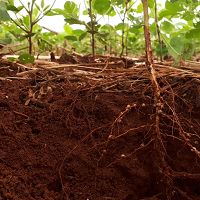
NSF Blog: No soils, no life
27 Oct 2020 (National, Boulder, Calhoun, Catalina-Jemez, Eel, IML, Luquillo, Reynolds, Shale Hills, Sierra) - They’re beneath our feet, but we seldom hear important signals in the soils

AGU 2020: Sessions related to CZ Science
06 Oct 2020 (National, Boulder, Calhoun, Catalina-Jemez, Eel, IML, Luquillo, Reynolds, Shale Hills, Sierra) - A list of sessions related to CZ Science at the upcoming virtual AGU 2020 Fall Meeting.

October 2020 Issue of Eos features Critical Zone Science
28 Sep 2020 (National, Boulder, Calhoun, Catalina-Jemez, Eel, IML, Luquillo, Reynolds, Shale Hills, Sierra) - In the October 2020 Issue, Eos focuses on the Critical Zone at a pivotal point as the discipline comes of age.

2020 CZO Webinar Series on Sustainability
17 Jun 2020 (National, Boulder, Calhoun, Catalina-Jemez, Eel, IML, Luquillo, Reynolds, Shale Hills, Sierra) - For an updated listing of these talks, including abstracts, see /national/education-outreach/sustainability-2020/ The U.S....
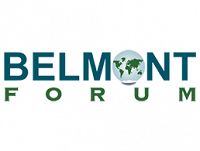
Belmont Forum Announces Collaborative Research Call on Soils
20 Apr 2020 (National, Boulder, Calhoun, Catalina-Jemez, Eel, IML, Luquillo, Reynolds, Shale Hills, Sierra) - The Belmont Forum is pleased to announce the launch of a collaborative research call on the theme: Towards Sustainability of Soils and Groundwater...

CZOs at AGU 2019
19 Nov 2019 (National, Boulder, Calhoun, Catalina-Jemez, Eel, IML, Luquillo, Reynolds, Shale Hills, Sierra) - A list of CZ-related sessions, abstracts and events at the 2019 AGU Fall Meeting.

CZ colleagues: Please contact us about proposals for NSF’s CZ Collaborative Network, due 02 Dec 2019
08 Jul 2019 (National, Boulder, Calhoun, Catalina-Jemez, Christina, Eel, IML, Luquillo, Reynolds, Shale Hills, Sierra) - CZO will end Nov 2020, succeeded by the “CZ Collaborative Network”. Let’s explore how the CZ community can build upon the CZOs via new NSF proposals.
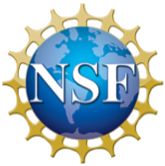
NSF solicitation: Dynamics of Integrated Socio-Environmental Systems (CNH2)
20 Nov 2018 (National, Boulder, Calhoun, Catalina-Jemez, Eel, IML, Luquillo, Reynolds, Shale Hills, Sierra) - NSF Crosscutting CNH2: Dynamics of Integrated Socio-Environmental Systems (CNH2) Solicitation 19-528 DUE DATES Letter of Intent Deadline...

CZOs at AGU 2018
19 Nov 2018 (National, Boulder, Calhoun, Catalina-Jemez, Eel, IML, Luquillo, Reynolds, Shale Hills, Sierra) - The 2018 AGU Fall Meeting will be held December 10-14 in Washington, D.C.
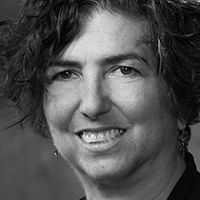
Congratulations Jill Marshall on receiving the 2018 Luna B. Leopold Young Scientist Award
06 Nov 2018 (National, Boulder, Eel, Reynolds, Sierra) - Marshall Receives 2018 Luna B. Leopold Young Scientist Award

NSF Discovery articles focus on the CZOs.
10 May 2018 (National, Boulder, Calhoun, Catalina-Jemez, Christina, Eel, IML, Luquillo, Reynolds, Shale Hills, Sierra) - The Discoveries section of the National Science Foundation's website on Critical Zone Observatories (CZOs).
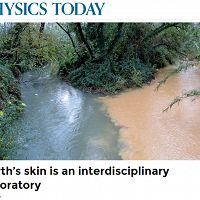
Earth’s skin is an interdisciplinary laboratory
29 Jan 2018 (National, Boulder, Calhoun, Catalina-Jemez, Eel, IML, Luquillo, Reynolds, Shale Hills, Sierra) - In the January 2018 issue of Physics Today, writer Toni Feder explores the scope of CZ research in the article, “Earth’s skin is an...
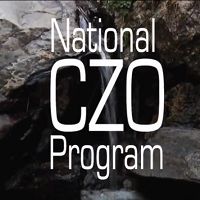
White paper of 2017 CZ Science Meeting in Arlington, VA
01 Jan 2018 (National, Boulder, Calhoun, Catalina-Jemez, Christina, Eel, IML, Luquillo, Reynolds, Shale Hills, Sierra) - New Opportunities for Critical Zone Science Following the June 2017 Arlington Meeting for Critical Zone Science (hosted by CZO), a white booklet...

Undergraduate course curriculum, “Introduction to Critical Zone Science,” available free online
01 Jan 2018 (National, Boulder, Calhoun, Catalina-Jemez, Christina, Eel, IML, Luquillo, Reynolds, Shale Hills, Sierra) - A 15-week semester-long upper-level undergraduate course curriculum entitled “Introduction to Critical Zone Science” is now available free online.
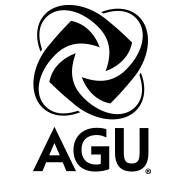
CZOs at AGU 2017
05 Dec 2017 (National, Boulder, Calhoun, Catalina-Jemez, Christina, Eel, IML, Luquillo, Reynolds, Shale Hills, Sierra) - Information on CZO award recipients, events, presentations, etc. at the 2017 AGU Fall Meeting.
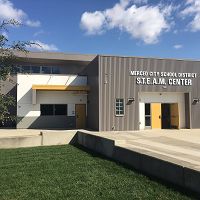
Observatory scientists volunteer with students at new STEAM Center in Merced
02 Nov 2017 (National, Sierra) - UC Merced scientists are sharing their research, stories, and expertise at Merced City School District's new STEAM Center.
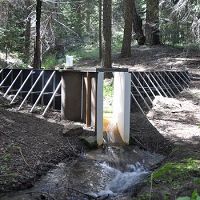
Water Resources Research Special Collection: Concentration-discharge relations in the critical zone
30 Oct 2017 (National, Boulder, Calhoun, Catalina-Jemez, Christina, Eel, IML, Luquillo, Reynolds, Shale Hills, Sierra) - Water Resources Research published a new special collection in September 2017 featuring concentration-discharge research from multiple CZOs.
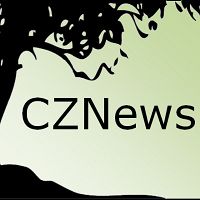
CZNews: Fall 2017
25 Oct 2017 (National, Boulder, Calhoun, Catalina-Jemez, Christina, Eel, IML, Luquillo, Reynolds, Shale Hills, Sierra) - The CZO National Office's quarterly newsletter CZNews: Fall 2017.

CZNews: Summer 2017
27 Jul 2017 (National, Boulder, Calhoun, Catalina-Jemez, Christina, Eel, IML, Luquillo, Reynolds, Shale Hills, Sierra) - CZO National Office's quarterly newsletter CZNews: Summer 2017.

UCTV: Southern Sierra CZO researchers featured on Sustainable California channel
21 Jun 2017 (National, Sierra) - University of California Television (UCTV) features Bales, Conklin, Glaser, Safeeq, and others on the new Sustainable California channel
_200_200_80auto_s_c1.jpg)
Contribute a classroom/field activity to NAGT’s Teach the Earth
22 May 2017 (National, Boulder, Calhoun, Catalina-Jemez, Christina, Eel, IML, Luquillo, Reynolds, Shale Hills, Sierra) - Contribute a classroom or field activity to Teach the Earth.

The frontier beneath our feet — an AGU commentary on the critical zone
21 Apr 2017 (National, Boulder, Calhoun, Catalina-Jemez, Christina, Eel, Luquillo, Reynolds, Shale Hills, Sierra) - AGU has published a collection of commentaries highlighting the important role Earth and space science research plays in society.

2017 CZO Webinar Series: Critical Zone and Society
06 Apr 2017 (National, Boulder, Calhoun, Catalina-Jemez, Christina, Eel, IML, Luquillo, Reynolds, Shale Hills, Sierra) - 2017 CZO Webinar Series: Critical Zone and Society.
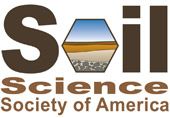
K-12 Soil Science Teacher Resources
24 Mar 2017 (National, Boulder, Calhoun, Catalina-Jemez, Christina, Eel, IML, Luquillo, Reynolds, Shale Hills, Sierra) - The Soil Science Society of America (SSSA) is a professional scientific society, made up of soil scientists, educators, and consultants focused on...

CZOs at AGU 2016
22 Nov 2016 (National, Boulder, Calhoun, Catalina-Jemez, Christina, Eel, IML, Luquillo, Reynolds, Shale Hills, Sierra) - CZOs at AGU 2016: Agenda and award recipients

Critical Zone Q&A with researcher Adrian Harpold
19 Oct 2016 (National, Boulder, Catalina-Jemez, Reynolds, Sierra) - University of Nevada Reno's Adrian Harpold reflects on his past and present time researching at Critical Zone Observatories.

Shale Hills CZO hosts Jorden Hayes for All-Hands 2016
16 May 2016 (Shale Hills, Sierra) - Jorden Hayes (Southern Sierra CZO) was an invited speaker and visitor to the Shale Hills CZO All-Hands meeting in May 2016

Critical Zone Profile - JORDEN HAYES (geophysicist, Assistant Professor)
23 Mar 2016 (National, Sierra) - Assistant Professor, Earth Sciences, Dickinson College
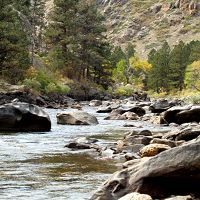
Water Resources in a Changing Climate
19 Jan 2016 (National, Boulder, Calhoun, Sierra) - CZO community members were chosen as keynote speakers at Colorado State University's Hydrology Days 2015.

NSF special report: Let It Snow! The Science of Winter
14 Jan 2016 (National, Sierra) - Report reveals inner worlds of snow and winter, and their importance to humans and ecosystems
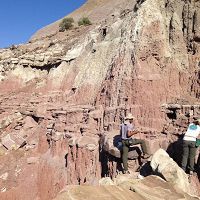
EOS: Taking the Pulse of the Earth’s Surface Systems
04 Dec 2015 (National, Boulder, Calhoun, Catalina-Jemez, Christina, Eel, IML, Luquillo, Reynolds, Shale Hills, Sierra) - Taking the Pulse of the Earth's Surface Systems In September of 2014, Laurel Larsen (UC Berkley), Elizabeth Hajek (Penn State), and others...
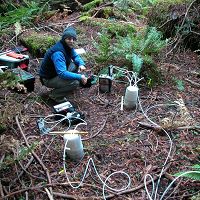
KQED Quest program features Eel River and Sierra CZOs
10 Nov 2015 (National, Eel, Sierra) - San Francisco's KQED public television features the Eel River and the Southern Sierra CZOs in a production of QUEST, a science and technology...

Critical Zone Profiles - Meet the people doing CZO science (Southern Sierra CZO)
07 Sep 2015 (National, Sierra) - Get a sense of the people and the work. Several members of the Southern Sierra CZO are profiled here, including students and professors.

Critical Zone Profile - CARLOS OROZA (systems engineer, PhD student)
07 Sep 2015 (National, Sierra) - PhD Student, Systems Engineering, University of California Berkeley
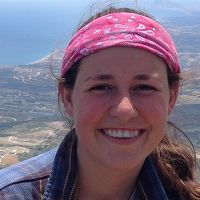
Critical Zone Profile - LINDSAY ARVIN (geomorphologist, PhD student)
07 Sep 2015 (National, Sierra) - PhD Student, Department of Geology and Geophysics, University of Wyoming
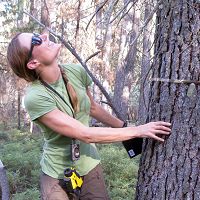
Critical Zone Profile - MELISSA THAW (mountain hydrologist, PhD student)
07 Sep 2015 (National, Sierra) - PhD Student, Environmental Systems, University of California Merced

Critical Zone Profile - MOHAMMAD SAFEEQ (hydrologist, assistant research scientist)
07 Sep 2015 (National, Sierra) - Assistant Research Scientist, Sierra Nevada Research Institute, University of California, Merced.
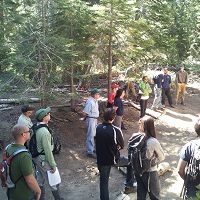
FAQ for 2014 All Hands Meeting
20 Aug 2014 (National, Sierra) - Answers to frequently asked questions.

Reactive Transport Modeling Survey – Community Needs for Biogeochemical Studies
08 Apr 2014 (National, Boulder, Calhoun, Catalina-Jemez, Christina, Eel, IML, Luquillo, Reynolds, Shale Hills, Sierra) - Reactive Transport Modeling Survey – Community Needs for Biogeochemical Studies The below survey is designed by Alexis Navarre-Sitchler, Kate...

“What’s so critical about the Critical Zone?” webinar
02 Apr 2014 (National, Boulder, Calhoun, Catalina-Jemez, Christina, Eel, IML, Luquillo, Reynolds, Shale Hills, Sierra) - March 31, 2014. Dr. Enriqueta Barrera (NSF CZO program director) and Dr. Gordon Grant (USFS; CZO Steering Committee chairperson)

2014 CZOData Cyber-Seminar Spring Series
06 Mar 2014 (National, Boulder, Calhoun, Catalina-Jemez, Christina, Eel, IML, Luquillo, Reynolds, Shale Hills, Sierra) - Presentations describing the Integrated CZO Data system and how to use it; for interested CZO investigators, students & staff.
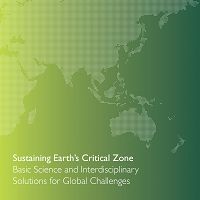
Sustaining Earth’s Critical Zone - Report from 2011 International CZ Meeting
29 Jul 2013 (National, Boulder, Catalina-Jemez, Christina, Luquillo, Shale Hills, Sierra) - International CZ science community outlines interdisciplinary research needed to address land use changes, climate change, and biodiversity decline
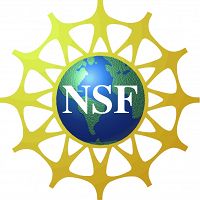
Discoveries in the Critical Zone: Where Life meets Rock
11 Jul 2013 (National, Boulder, Catalina-Jemez, Christina, Luquillo, Shale Hills, Sierra) - The National Science Foundation's Cheryl Dybas recently finalized a new report entitled "Discoveries in the Critical Zone: Where Life meets...

InTeGrating CZO Science
06 Jun 2013 (Catalina-Jemez, Christina, Luquillo, Shale Hills, Sierra) - During the week of May 19, five faculty members interested in Critical Zone science traveled to Northfield, MN to participate in an InTeGrate...
-
Cross-CZO Events
2011 CZO All-Hands Meeting
2nd Biannual National CZO Network All-Hands Meeting, Biosphere II & Univ. of Arizona
Biosphere II, Tucson AZ, USA.CUAHSI Cyberseminar - Mike Goulden on S Sierra CZO
Relationships between elevation, climate, and ecosystem properties in the Sierra CZO
Online.AGU Fall Meeting
Moscone Center, San Francisco.CUAHSI Cyberseminar - Noah Molotch on western CZOs
Snowmelt as a Driver of Ecohydrological Processes: Low-hanging Fruit for Cross-CZO Research
Online.CZO-Annual PI meeting:
CZO-Annual PI meeting 2012, hosted by Luquillo Critical Zone Observatory
Hotel El Convento, Old San Juan, Puerto Rico.Goldschmidt 2012
Goldschmidt Conference, Montréal, June 2012: Earth in Evolution
Palais des Congrès, Montréal, Canada.AGU Fall Meeting 2012
CZOs give more than 125 presentations at the 2012 American Geophysical Union Fall Meeting
Moscone Center, Fourth and Howard Streets, San Francisco, CA.EarthCube-CZO Workshop
EarthCube Domain Workshop: Engaging the Critical Zone community to bridge long tail science with big data
University of Delaware, Newark, DE.Webinar: Nutrient deserts, erosion and weathering in Sierra
Webinar offered April 18th on research from the Sierra Nevada range in California
Online.SNRI booth @ Riverdance Farms
SNRI booth hosted at the 2013 Pick and Gather Festival, Riverdance Farms
Riverdance Farms, 12230 Livingston Cressey Road.Goldschmidt 2013 conference
Session 16B: Probing the Critical Zone (and related Session 19C) will be held at Goldschmidt 2013 in Florence, Italy 25-30 August 2013.
Florence, Italy.POSTPONED - 2013 CZO All-Hands Meeting
Postponed until 2014. 2nd Biannual National CZO Network All-Hands Meeting
University of Delaware, Clayton Hall.Depths of the Critical Zone
Drilling, Sampling, and Imaging the Depths of the Critical Zone: NSF Workshop
Denver, CO.GSA Annual Meeting
Geological Society of America, 2013 Annual Meeting - CZO presentations
Colorado Convention Center, Denver, Colorado.AGU Fall Meeting
2013 AGU Fall Meeting - Southern Sierra CZO abstracts & presentations
San Francisco, Moscone Center.Watershed Science Master Class
A short course for graduate students and post-doctoral fellows Sponsored by CUAHSI and the University of Arizona
Biosphere 2 near Tucson, Arizona.“What’s so critical about the Critical Zone?” webinar
Speakers: Dr. Enriqueta Barrera (NSF) and Dr. Gordon Grant (USFS)
Internet .Goldschmidt
2014 Goldschmidt meeting in Sacramento, CA
Sacramento Convention Center Complex, California.Critical Zone Town Hall
CZO Town Hall at 2014 Goldschmidt Conference
Sacramento Convention Center Complex, California..December 8 CZO webinar
Using a CZO network to explore the architecture, dynamics and evolution of the Critical Zone
Online.1:1 Data Consultation: Southern Sierra CZO and CZOData team
Southern Sierra CZO and the CZOData team will discuss sharing data.
Online: 11-1 EDT / 10-12 CDT / 9-11 MDT / 8-10 PDT.AGU 2015: A Town Hall for the Network of CZOs
AGU 2015: A Town Hall for the Network of Critical Zone Observatories (TH25D)
San Francisco, CA - Moscone Center, Moscone West - 2010.CUAHSI Watershed Science Master Class
CUAHSI Watershed Science Master Class
Biosphere2, Oracle, Arizona.European Geosciences Union (EGU) General Assembly 2016
EGU Meeting will take place 17–22 April 2016 in Vienna, Austria.
Austria Center Vienna (ACV) in Vienna, Austria.Goldschmidt Conference 2016
26th Goldschmidt Conference in Yokohama, Japan on 26th June to the 1st of July
Pacifico Yokohama, Yokohama, Japan.ESA Annual Meeting 2016
The Ecological Society of America's Annual Meeting in Fort Lauderdale, Florida
Fort Lauderdale, Florida .2016 GSA Annual Meeting
Denver, Colorado.ASA-CSSA-SSSA Annual Meeting 2016
Resilience Emerging from Scarcity and Abundance, Nov. 6-9, 2016, in Phoenix, Arizona.
Phoenix, Arizona .NSF Review of CZO Network
Review of CZO network by NSF will occur in Fall 2016
National Science Foundation, Arlington, VA.2016 AGU Fall Meeting
American Geophysical Union Annual Meeting in San Francisco, CA
Moscone Center, San Francisco, California .CZO Town Hall at AGU 2016
Town Hall: Critical Zone Observatories: Platforms for Collaborative Science
AGU Meeting, San Francisco, CA.CZO Webinar: Critical Zone Services
Critical Zone Services webinar presented by David Breshears and Jason Field
Online.GSA Joint Section Meeting 2017
GSA Joint Northeastern-North Central Section Meeting
Omni William Penn Hotel, Pittsburgh, PA.Webinar: Blue Revolution: Water scarcity in a changing world
Blue Revolution: Water scarcity in a changing world webinar presented by Praveen Kumar.
Online.CZO Webinar: Drought resilience and water security
Drought resilience and water security presented by Roger Bales
Online.SSA 2017 Annual Meeting
Seismological Society of America 2017 Annual Meeting in Denver, Colorado.
Sheraton Downtown in Denver, Colorado.CZO Webinar: Forecasting of Earth surface processes
Forecasting of Earth surface processes webinar presented by Jon Pelletier.
Online.CZO Webinar: Policy Relevance of Critical Zone Science
Policy Relevance of Critical Zone Science webinar presented by Steve Banwart
Online.2017 Arlington Meeting for Critical Zone Science
"Critical Zone Science: Current Advances and Future Opportunities”. Arlington, VA (near NSF).
DEADLINE: 01 APRIL 2017 for registration & optional abstract.
Hilton Hotel, Arlington, Virginia.Goldschmidt 2017
Goldschmidt 2017 will be held in Paris, France on August 13-18, 2017.
Le Palais des Congrès de Paris, Paris, France.6th International Symposium on Soil Organic Matter
6th International Symposium on Soil Organic Matter: Healthy soils for sustainable agriculture: the role of SOM
Rothamsted Research, Harpenden (UK).2017 International ASA, CSSA and SSSA Annual Meeting
American Society of Agronomy, Crop Science Society of America, & Soil Science Society of America 2017 International Annual Meeting
Tampa, FL.CZO Town Hall at AGU 2017
Town Hall: Critical Zone Observatories: Platforms for Collaborative Science
New Orleans Ernest N. Morial Convention Center.CZO / LTER / NEON / ISMC Joint Workshop
Modeling the Critical Zone; State of the Art, Data Integration, and Frontiers
Boulder, Colorado.GSA Northeastern Section Meeting 2018
Burlington, Vermont.GSA Joint Section Meeting 2018
GSA Joint Rocky Mountain and Cordilleran Section Meeting
Flagstaff, Arizona.Goldschmidt 2018
Boston, Massachusetts.GSA Annual Meeting 2018
The Geological Society of America 130th Annual Meeting
Indianapolis, Indiana.SSSA International Soils Meeting 2019
2019 Soil Science Society of America International Soils Meeting
San Diego, California. -
Cross-CZO Models
Explore Further





